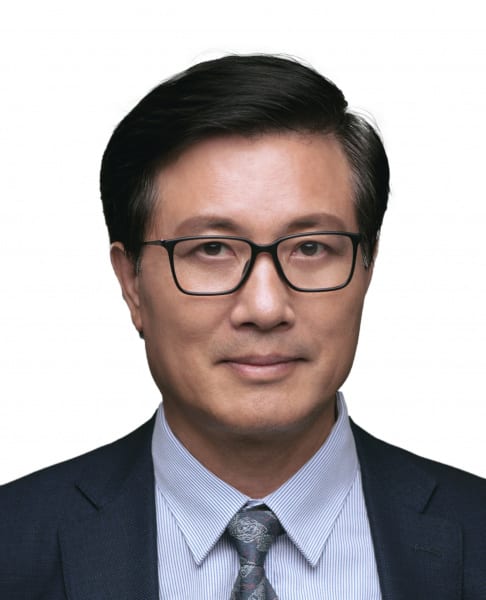
Prof. Zikang TANG 汤子康教授
Director of Institute of Applied Physics and Materials Engineering
应用物理和材料工程研究院院长
University of Macau (UM), China 澳门大学
Zikang Tang, currently is Chair Professor and Director of Institute of Applied Physics and Materials Engineering, University of Macau. Before he joined to University of Macau in Jan 2016, he has been working for Hong Kong University of Science and Technology, as professor in the Department of Physics. Prof. Tang is a pioneer in research on wide bandgap semiconductor photo-electronic physics and devices. With outstanding achievements in the field of zinc oxide ultraviolet lasing materials and devices, he won a State Natural Science Award (2nd class) in 2003. In 2000, he developed a unique technique to produce the world’s smallest single-walled carbon nanotubes (SWNTs), with diameter of only 0.4 nm, which has been hailed as a revolutionary epoch-making material. Later, he observed novel one-dimensional superconductivity in these ultra-small SWNTs, causing a stir in the global scientific community. He was among the first group of professors recruited under China’s “Thousand Talent Scheme” and he is recipient of "China Guanghua Engineering Science and Technology Award" (2020). He has published more than 300 papers in prestigious international journals, with citation frequency of over 12100 times. His pioneer research work on zinc oxide ultraviolet laser emission published on Applied Physics Letters is among the top 50 most cited papers in the past 50 years listed in the special 50th Anniversary edition of Applied Physics Letters. His research interest includes Nano structured electronic materials, Carbon nanotubes, graphene and 2D materials, ZnO crystal thin films, wide-gap semiconductors and their photo-electronic devices.

Prof. William C. Tang (FInstP, FAIMBE)
University of California, Irvine, USA
William C. Tang received his BS (1980), MS
(1982), and PhD (1990) degrees in Electrical Engineering and Computer Sciences
from the University of California at Berkeley. His seminal thesis and invention
of the electrostatic comb drive has been internationally recognized as one of
the key building blocks of Micro-electromechanical Systems (MEMS) sensors and
actuators, and is the most widely-cited work in the field for over two decades.
Since his graduation, Dr. Tang contributed to the automotive industry at Ford
Motor Company and space exploration at the Jet Propulsion Laboratory.
Subsequently, he served as the DARPA Program Manager for various MEMS programs,
the single largest federal funding source for MEMS at the time. In 2002, he was
appointed a Professor of Biomedical Engineering and Electrical Engineering &
Computer Science at the University of California, Irvine. Later, he was also
jointly appointed with the Chemical and Biomolecular Engineering and the
Materials Science and Engineering Departments. He was the first Associate Dean
for Research in the Henry Samueli School of Engineering from 2008 to 2013. His
research interests include micro- and nano-scale biomedical engineering, neural
engineering, neuropathology and clinical applications. He is a Senior Member of
the Institute of Electrical and Electronics Engineers, a Fellow and Chartered
Physicist with the Institute of Physics, and a Fellow of the American Institute
for Medical and Biological Engineering.
Speech Topic: Probing Neural Science at the Micro and Nano
Scales
Abstract: According to the United Nations, there is one in
every 6 persons in the world suffering from neurologic disorder. In the United
States alone, there were 6.2 million patients living with Alzheimer’s disease in
2020; for example. This figure is projected to increase to 14 million in less
than 30 years. Between 2000 and 2017, death from heart disease had gone down by
9%, while death from Alzheimer’s disease had gone up by 145%, killing more
seniors than breast cancer and prostate cancer combined. At the same time,
various treatments for Alzheimer’s disease have not been effective without any
known cure. Twenty years have passed between the previous FDA-approved drug for
Alzheimer’s disease and the latest accelerated approval of aducanumab on June 7,
2021. One of the main bottlenecks in developing effective and long-lasting
treatments in neurological disorders is our yet insufficient understanding of
the nervous system and how various disorders impact its physiology. The advent
of micro technology is offering tools to probe at the brain at a scale that has
never been reached before and provide meaningful augmentation to our current
knowledge on how the brain and the rest of the nervous system work. The uses of
Microelectromechanical Systems (MEMS) and nanotechnology both in vivo and in
vitro have elucidated the intricate and complex network of neuronal tissues and
subregions of different parts of the brain. One example of such advances is the
reconstruction of hippocampal subregions in a microfluidic device to study the
electrophysiology of neural communications. The hippocampus has been known as
the center for memory formation, consolidation, and retrieval. The rich axonal
spike dynamics between subregions of the hippocampus reveal both constraints and
broad emergent dynamics of hippocampal architecture. In particular, certain
aspects of how memories are received, sorted, stored, and retrieved can be
probed at with analyzing spikes and spike dynamics from subregions of the
hippocampus. Further studies could shed light on how the brain learns and
unlearns. Similar studies on the other parts of the brain are vital to
understanding how disease states impact the brain and how potential therapeutic
strategies can be developed meaningfully.
ICNST 2021 Invited Speakers
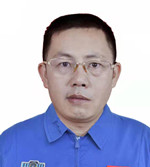
Dr. Wenan Zhong 钟文安博士
Chief Engineer, Xichang Satellite Launch Center, China 西昌卫星发射中心总工程师
Dr. Wenan Zhong is the current chief engineer of
Xichang Satellite Launch Center (XSLC). He graduated from the National
University of Defense Technology in 1991. He is a panelist of Beidou Navigation
Satellite System (BDS), Chang'e Project and other major special projects. Dr.
Zhong is the deputy designer-in-chief of launch sites for China’s Lunar
Exploration Program, Mars Exploration Program, and Manned Space Engineering
Program. He was honored with one first prize of the National Science and
Technology Progress Award, one first prize of the Ministry of Education Science
and Technology Progress Award, two second prizes and three third prizes for Army
Science and Technology Progress
Award.
钟文安,西昌卫星发射中心总工程师,1991年毕业于国防科技大学。北斗卫星工程,嫦娥探月工程等重大专项工程专家组成员,探月工程、火星探测、载人空间工程等发射场副总设计师。获得国家科技进步一等奖一次,教育部科技进步一等奖一次,军队科技进步二等奖2项,三等奖3项。
Speech Topic: Analysis of engineering application requirements
of nano coating materials in typical atmospheric environment of South China Sea
Abstract: Coatings are the primary means to control the
corrosion of marine engineering structures. It is the frontier and hot spot of
nano coating materials research to use nano materials to modify anti-corrosion
coatings, realize the complementary advantages between different materials, and
prepare high-performance, environmental protection, energy saving and functional
anti-corrosion coatings. However, with the application of nano coating materials
in the atmospheric environment of the South China Sea, there are many problems
of poor weatherability. Based on the environmental corrosion characteristics of
the South China Sea coastal zone, this paper evaluates the environmental
adaptability of several nano coating materials in the coastal atmospheric
environment, analyzes the engineering application requirements of nano coating
materials, and puts forward the measures and suggestions for the development of
nano coating materials in marine engineering in view of the main problems
existing in the engineering application of nano coating materials in China.
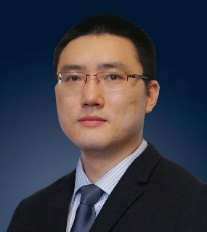
Prof. Junsong Chen 陈俊松教授
University of Electronic Science and Technology of China 电子科技大学
Professor Jun Song CHEN received his Ph.D. at
Nanyang Technological University in 2012. After that, he worked at the Max Plank
Institute of Colloids and Interfaces as an Alexander von Humboldt researcher
from 2013 to 2014. He is now a Professor at the School of Materials and Energy,
University of Electronic Science and Technology of China. He was one of the
“Thomson Reuters Highly Cited Researchers” and “Elsevier Chinese Highly Cited
Researchers”. His research interests include the design of nanostructured
materials for energy-related applications, such as supercapacitors, lithium
batteries, and water splitting.
Speech Topic: Interface Engineering in Heterostructured Metal
Selenides for Enhanced Sodium Storage Properties
Abstract: As a promising alternative to the lithium-ion
batteries especially in the large-scale applications, sodium-ion batteries
possess the distinct advantages including the high reserves of sodium resources.
However, the large atomic size of sodium ions causes the sluggish kinetic
process as well as severe structural variation during charge/discharge process.
To address these problems, we developed effective approaches to construct metal
selenides with unique heterostructures, giving rise to interfaces with greatly
enhanced electronic and ionic conduction. This led to selenide nanocomposites
with significantly improved cycling stability and high-rate performance for
sodium-ion batteries.
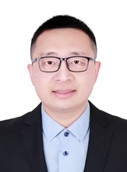
Prof. Dewei Zhao 赵德威教授
Sichuan University, China 四川大学
Dewei Zhao received his Ph.D. degree from
Nanyang Technological University, Singapore. From 2012–2018, he worked as a
Postdoc Associate at University of Michigan and University of Florida and a
Research Assistant Professor at The University of Toledo. Currently, he has been
a professor in Institute of Solar Energy Materials and Devices, College of
Materials Science and Engineering at Sichuan University, China. He has been
awarded “Chinese Government Award for Outstanding Self-Finance Students Abroad”
(2011, China), and “Green Talents Competition 2010” (BMBF, Germany). He has
contributed over 100 publications in journals of Nat. Energy (2), Science (3),
Adv. Mater. (2), Adv. Energy Mater. (3), etc. He has also been serving as
referee in journals of Nat. Energy, Energy & Environ. Sci., Adv. Mater., J. Am.
Chem. Soc., etc. His recent research interest focuses on organic/inorganic
hybrid optoelectronic devices and characterizations, such as thin-film solar
cells, light-emitting diodes, and photodetectors.
Speech Topic: Efficient Sn-based Perovskite Solar Cells
Abstract: Tandem solar cells using all metal-halide perovskite
thin films show great promise for next-generation solar cells in terms of
reduced cost, flexibility, and high efficiency, an effective way to break the
Shockley-Queisser limit of single-junction cells. Low-bandgap mixed tin (Sn)-lead
(Pb) perovskite solar cells, as a key to make highly efficient all-perovskite
tandem solar cells, have been gaining extensive interest due to their
appropriate bandgaps and promising application to build efficient all-perovskite
tandem cells. Tin fluoride (SnF2) as a basis along with various strategies has
been widely used. However, fully understanding the roles of SnF2 in both films
and devices is still lacking. Here, we will present the progress and strategies
on low-bandgap Sn-Pb cells devoted by our group in the past years. More
importantly, we systematically investigate the effect of single SnF2 additive on
both optoelectronic properties of low-bandgap mixed Sn-Pb perovskite films and
solar cells performance. We find that a decent amount of SnF2 not only
suppresses the oxidation of Sn2+ and reduces the hole concentration related to
Sn vacancies, but also promotes the perovskite growth, which reduces the
disorder of crystal arrangement and improves the crystallinity. We also probe
and evidence the location of excessive the F- ions. Our work suggests that such
a fundamental understanding of SnF2 additives would definitely help unveil the
in-depth mechanisms of additional additives and approaches proposed in efficient
low-Eg mixed Sn-Pb perovskite solar cells towards making highly efficient all-perovskite
tandem solar cells.
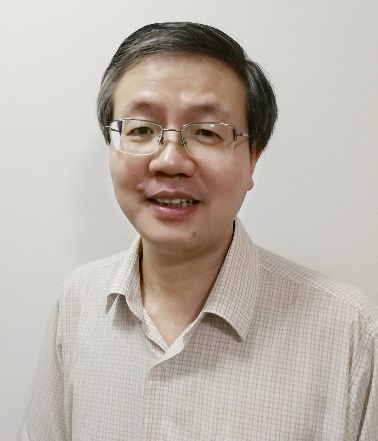
Assoc. Prof. Jianwen Jiang (FRSC)
National University of Singapore, Singapore
Jianwen Jiang is an associate professor in the
Department of Chemical and Biomolecular Engineering at the National University
of Singapore (NUS), also in NUS Graduate School for Integrative Sciences and
Engineering, and a fellow in Membrane Science and Technology Consortium,
Singapore. His research expertise is computational materials modeling, currently
focused on metal-organic frameworks and polymer membranes for energy,
environmental and pharmaceutical applications such as carbon capture, water
desalination and drug delivery. The modeling research is in the
multidisciplinary field of materials, chemistry, engineering and physics, in
close collaboration with experimental groups. He has published over 250
technical manuscripts, as well as over 10 invited reviews and book chapters. He
is a Fellow of the Royal Society of Chemistry (UK).
Speech Topic: Metal-Organic Frameworks for Chemical Separations and Reactions: A Computational Perspective
Abstract: Metal-organic frameworks (MOFs) have emerged as a
unique class of nanoporous materials and received tremendous interest over the
last two decades. The variation of metal oxides and the judicious choice of
controllable organic linkers allow the pore size, volume and functionality of
MOFs to be readily tailored in a rational manner. Consequently, MOFs provide a
wealth of opportunities for engineering of nanoporous materials and have been
considered as versatile candidates for many important potential applications.
Nevertheless, the number of MOFs synthesized to date is extremely large, thus
experimental testing alone is economically expensive and practically infeasible.
With rapidly growing computational resources, computational methods have become
indispensable to characterize, screen, and design MOFs. In this presentation, I
will give an overview of our recent computational studies on MOFs for chemical
separations and reactions, such as carbon capture and utilization, biofuel
purification, water desalination, chiral synthesis, etc. It will be demonstrated
that computations at an atomic/molecular level can secure the quantitative
interpretation of experimental observations, provide microscopic insight from
bottom-up, and facilitate the development of new MOFs.
Previous Speakers

Prof. Jun Ding
National University of Singapore
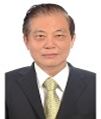
Prof. Der-Jang Liaw
National Taiwan University of Science and Technology, Taiwan
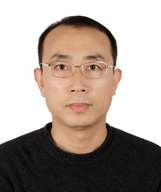
Prof. Hongwei Zhu
Tsinghua University, China
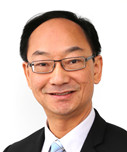
Prof. William C. Tang
University of California, USA
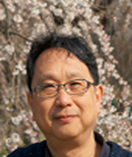
Prof. Masayoshi Tonouchi
Osaka University, Japan

Prof. Takashige Omatsu
Chiba University, Japan
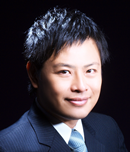
Prof. Da-Jeng Yao
National Tsing Hua University, Taiwan, China
The cookie settings on this website are set to "allow cookies" to give you the best browsing experience possible. If you continue to use this website without changing your cookie settings or you click "Accept" below then you are consenting to this.




